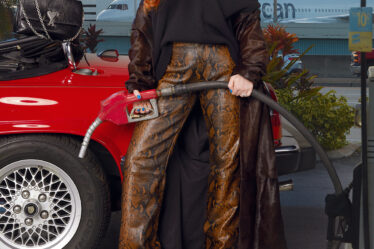
Zalando, the German fashion e-tailer with more than €10 billion in annual revenue, has acquired a majority stake in Highsnobiety, the sneaker blog-turned-luxury fashion and lifestyle publisher that began exploring a sale last year. The financial terms of the deal were not disclosed.
Highsnobiety founder and CEO David Fischer will retain a minority stake in the company and continue to run the business as a separate entity with co-managing director Jürgen Hopfgartner. While both Zalando and Highsnobiety are headquartered in Berlin, they will not merge offices.
Highsnobiety will contribute only a small sum to Zalando’s top line. (The company is expected to generate more than $60 million in 2022, with 60 percent of revenue coming from Europe.) But its ability to attract a large audience and inspire readers to shop could prove valuable to Zalando, which started in 2008 as a Zappos clone but has since pushed further upmarket. So could Highsnobiety’s relationships with sought-after brands in both luxury and streetwear.
When Highsnobiety was founded by Fischer in 2005 as a streetwear-focused blog, the promise of content-driven commerce compelled investors to back businesses like Refinery29 and WhoWhatWear — with mixed results. Fourteen years later, in 2019, Highsnobiety launched an e-commerce venture with an exclusive deal to sell Prada’s coveted Linea Rosa line and other luxury brands alongside its own collection, and has since opened physical retail stores.
“Most companies come from one end or the other — and not many have not truly managed to bring these worlds together,” Fischer said.
The Zalando deal is a vote of confidence in the approach.
“Fashion is a lot more than product; it’s about culture and all the stories behind the product,” said David Schneider, Zalando’s co-CEO. “[Customers] want to have more immersive experiences.”
Fischer began covering streetwear long before it became mainstream fashion. “Highsnob,” as it is known by readers, is now not only a trusted source on streetwear, but also covers the luxury brands that have started selling their own streetwear product and using streetwear’s marketing tactics. Many high-end brands and retailers — including Zalando — also hire Highsnobiety’s creative agency to make everything from podcasts to NFTs.
While its publishing arm still makes up the majority of Highsnobiety’s revenue, its commerce business is growing — making up a “double-digit percentage” of overall sales — and could benefit from Zalando’s technology and distribution capabilities to scale further.
For its part, Highsnobiety, with 35 million users across its platforms, could help Zalando to acquire and engage new customers.
While Zalando’s revenue jumped nearly 30 percent in 2021 to €10.4 billion, sales were flat in the first quarter of 2022. Schneider said that, after two years of “incredible” growth, the company is facing the effects of rapid inflation on consumer spending. Its high exposure to Eastern Europe also means the Ukraine war has hit the company harder than many.
Whereas Zalando serves Europe, Highsnobiety’s audience is global. But the e-commerce giant has no plans to expand to the US or China, where it would face stiff competition from the likes of Amazon and Alibaba.
“For now, it is Europe,” Schneider said.


